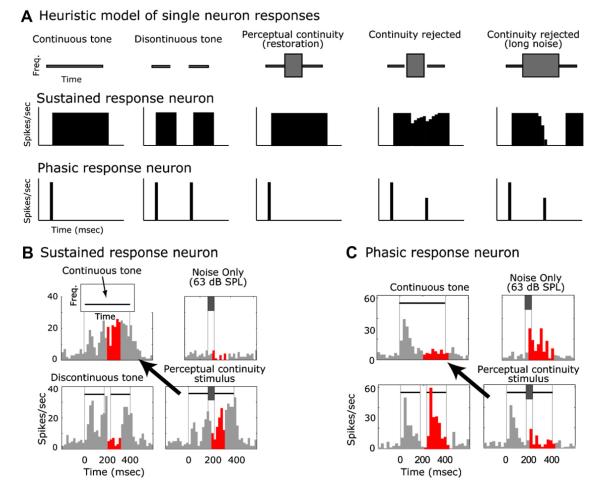Fig. 3.
Heuristic model and example A1 neuronal responses consistent with perceptual continuity/restoration. (A) Stereotyped sustained (tonic) and phasic responses are commonly observed in auditory cortex and would support continuity in different ways. For brevity we only show phasic onset responses; for other types of phasic responses see (Petkov et al., 2007). Sustained responders decrease their firing during discontinuities whereas phasic responders increase their firing. A lack of phasic responses would be as important as is the maintenance of sustained responses because if brief gaps are detected, the phasic responders can quickly provide information sufficient to reject perceptual continuity (Bregman and Dannenbring 1977). (B) Reponses of a sustained A1 neuron to different stimuli including the one that causes the continuity illusion (lower right in B). Note that the response to the illusory stimulus is similar to the response to a continuous tone (line with arrow). The red (dark in black and white figure) histogram bins show the time periods that were used in the analysis; the temporal window chosen for counting spikes was the window that produced the largest response difference between a tone and a tone with a gap (both conditions without noise). This window then was fixed and used to analyze all conditions. (C) Responses of a phasic neuron to different stimuli including the ones that causes the continuity illusion (lower right of C). Note how the response to the illusory stimulus is similar to the response to a continuous tone (line with arrow).

